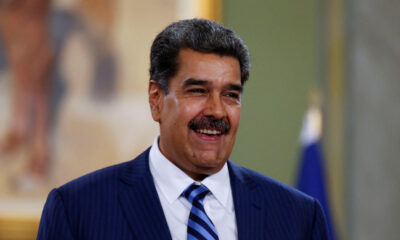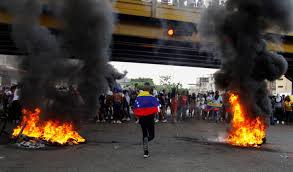Politics
Maduro Declared Winner Amid Disputed Venezuelan Election Results
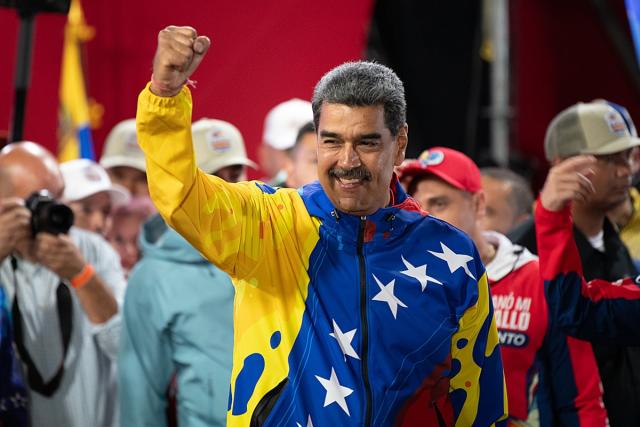
Venezuelan President Nicolás Maduro has been declared the winner of the country’s presidential election, according to partial results announced by the National Electoral Council (CNE). Elvis Amoroso, head of the CNE and a close ally of Maduro, stated that with 80% of ballots counted, President Maduro had secured 51% of the vote, while his main rival, Edmundo González, received 44%.
However, the Venezuelan opposition has rejected the CNE’s announcement as fraudulent, claiming that their candidate, González, actually won with 70% of the votes and should be recognized as the rightful president-elect. They argue that vote tallies, exit polls, and quick counts indicate that González led Maduro by a significant margin of 40 percentage points.
The opposition, having united behind González in an effort to unseat President Maduro after 11 years in power, pointed to opinion polls conducted prior to the election that suggested a decisive victory for González.
The outcome of this election carries significant implications beyond Venezuela’s borders, as the nation of 29.4 million people continues to grapple with economic and political turmoil. Over the past decade, approximately 7.8 million Venezuelans have fled the country due to the crisis under Maduro’s administration. Pre-election polls suggested this exodus might continue, with one survey indicating that a third of the population would consider emigration.
The election results are of particular interest to neighboring Latin American countries and the United States, where immigration remains a contentious issue. Venezuela’s vast oil reserves also make its political trajectory critical for global economic relations. Under Maduro, Venezuela has developed closer ties with countries like China, Iran, and Russia, while blaming US sanctions for its economic struggles.
US Secretary of State Antony Blinken expressed skepticism about the election results, highlighting “serious concerns that the declared outcome does not reflect the will or the votes of the Venezuelan people.” The CNE, dominated by government loyalists, has faced criticism for its handling of the election process.
Meanwhile, President Maduro celebrated the outcome as a “triumph of peace and stability,” commending the Venezuelan electoral system and dismissing his opponents. The opposition had deployed thousands of witnesses to polling stations nationwide in an effort to validate their vote count independently.
Politics
Trump Moves to Reshape Education System with Bold Reform Effort
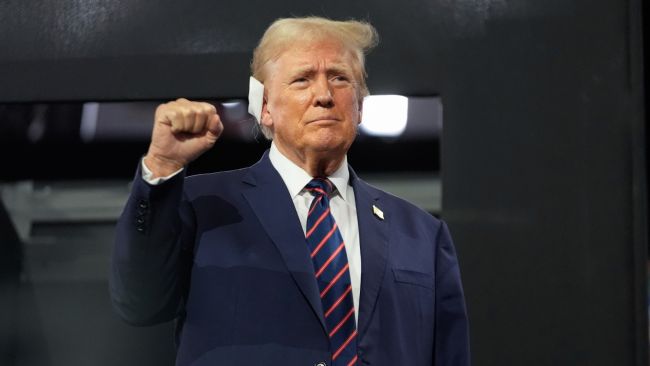
In a significant policy shift, President Donald Trump has signed an executive order aimed at dismantling the Department of Education, fulfilling a key campaign promise and advancing a long-standing goal of some conservative leaders. The move is designed to redirect funding and decision-making power to individual states, emphasizing local control over education.
During the signing ceremony at the White House, Trump highlighted the importance of streamlining government operations and ensuring that resources are used effectively to improve student outcomes. Surrounded by students, he stated, “The US spends more on education than most countries, yet our students’ performance does not reflect that investment. It’s time to empower states and communities to make the best decisions for their schools.”
The Department of Education, established in 1979, primarily oversees student loans and federal programs for low-income students. While only about 13% of primary and secondary school funding comes from federal sources, the administration believes that decentralizing control will allow for more targeted and effective educational strategies.
A Focus on Transition and Continuity
The executive order directs Education Secretary Linda McMahon to take necessary steps to transfer authority to state and local governments while ensuring a smooth transition that maintains critical services. The White House emphasized that no immediate disruptions would occur in educational support programs.
McMahon reassured department employees in a memo, stating, “This is our opportunity to perform one final, unforgettable public service to future generations of students. Our mission is to leave American education stronger, freer, and more hopeful.”
Challenges and Next Steps
While Trump’s order sets the stage for significant change, fully closing the department would require congressional approval. Senator Bill Cassidy has already announced plans to introduce legislation supporting the effort, though it faces hurdles in the Senate. Meanwhile, the administration is expected to reduce the department’s funding and reassign certain programs to other federal agencies, ensuring an efficient allocation of resources.
As the administration moves forward with its education reforms, the focus remains on strengthening opportunities for students, reducing bureaucracy, and ensuring states have greater control over their educational systems. The coming months will determine how these changes unfold and what impact they will have on the future of American education.
Politics
Chinese AI App DeepSeek Sparks Market Turmoil, $500bn Wiped from Nvidia and US Tech Giants

The emergence of Chinese AI app DeepSeek has triggered shockwaves across the US tech industry, leading to a significant drop in stock prices for major companies. AI chipmaker Nvidia saw its value plummet by 16%, losing $500 billion in market capitalization. Rival Broadcom also suffered a sharp decline, with shares falling 17.8%, while other tech giants like Microsoft and Meta experienced notable losses.
DeepSeek has quickly risen to become the most downloaded free app in the United States, overtaking popular rivals like ChatGPT. Its reported development cost of just $6 million has sent ripples through the industry, challenging the traditional notion that groundbreaking AI technology requires multibillion-dollar investments.
In stark contrast, companies like Microsoft and Meta have committed vast sums to AI development, with investments of $80 billion and $60–65 billion, respectively. DeepSeek’s meteoric rise suggests that a lower-cost, open-source approach may disrupt existing business models and redefine what is possible in AI.
The sudden market turmoil underscores concerns about America’s dominance in artificial intelligence. Investors are now questioning whether US tech companies can maintain their competitive edge against cheaper, innovative alternatives like DeepSeek.
Nvidia, a key player in AI chip manufacturing, experienced the most significant blow, as the app’s success has called into question the scalability and profitability of existing AI strategies reliant on expensive infrastructure.
DeepSeek’s rise highlights the potential for more cost-effective, innovative solutions in AI development. While its reported $6 million development budget remains disputed by some industry experts, it has already shifted perceptions of what achieving AI breakthroughs might cost.
This development could pave the way for smaller companies and governments to explore AI without the need for massive financial resources. In the UK, where the government is banking on AI to drive economic growth and reduce public service costs, such advancements could serve as inspiration for future projects.
Despite its success, DeepSeek’s rapid rise also raises questions about its long-term sustainability, data privacy, and the technology underpinning its platform. As researchers and analysts delve deeper into its model, the app’s low-cost development claims may face scrutiny.
The DeepSeek phenomenon has upended the AI market, challenging entrenched economic assumptions and sparking uncertainty for US tech giants.
News
Trump Signs Sweeping Executive Actions on First Day
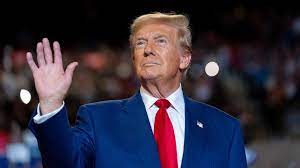
On his first day back in office, President Donald Trump signed an array of executive actions aimed at swiftly implementing his administration’s priorities. These measures reflect his campaign promises and address a wide range of domestic and international issues.
Key Executive Actions
1. Withdrawal from Paris Climate Agreement
The U.S. has officially begun the process of exiting the global accord, which aims to combat climate change through collective international efforts.
2. Initiating Exit from WHO
Trump has directed steps to formally withdraw from the World Health Organization, citing concerns about its handling of global health crises.
3. Border National Emergency
A national emergency has been declared at the southern border, signaling heightened measures to address immigration and security concerns.
4. Gender and Federal Policy
The administration enacted measures to “defend women from gender ideology” and promote what Trump referred to as “biological truth” in federal governance.
5. Pardons for January 6 Participants
Individuals involved in the January 6 Capitol riots have been pardoned, a move Trump framed as addressing what he called injustices in their prosecution.
6. Election Accountability
An order was signed to investigate and hold “former government officials accountable for election interference.”
7. Free Speech Protections
Trump ordered federal agencies to “restore freedom of speech” and prevent government censorship, emphasizing a commitment to First Amendment rights.
8. Establishment of Department of Government Efficiency (Doge)
An advisory board was created to streamline government operations, although it does not hold the status of a formal department.
9. Regulatory Freeze
A temporary freeze on the issuance of new regulations has been implemented, giving the administration time to assert control over federal rule-making processes.
10. Addressing Cost-of-Living Crisis
All federal departments and agencies were directed to prioritize measures addressing inflation and economic strain on Americans.
11. TikTok Ban Suspension
An action was signed to halt the implementation of a potential ban on TikTok, citing further review requirements.

